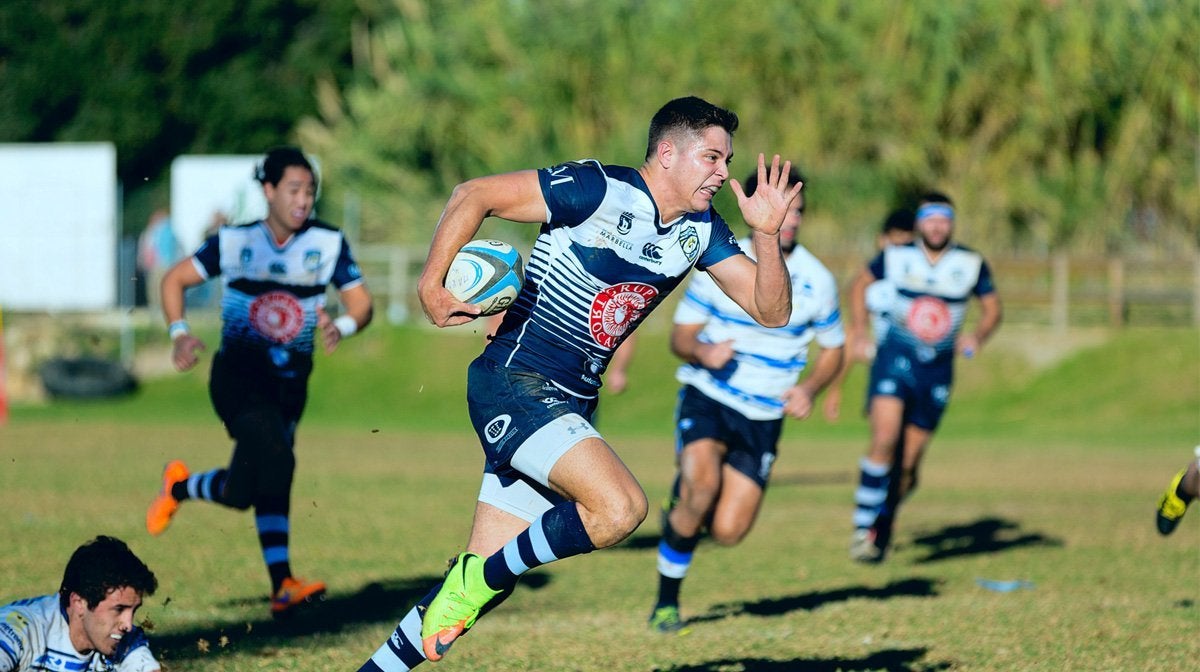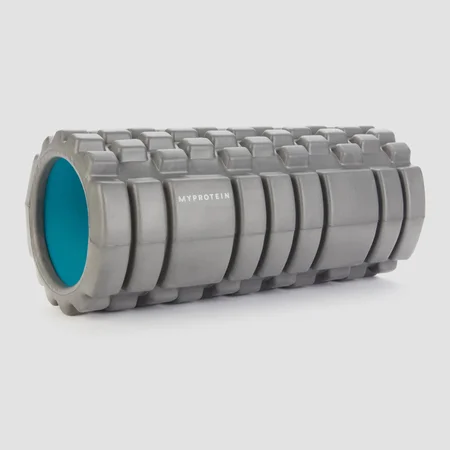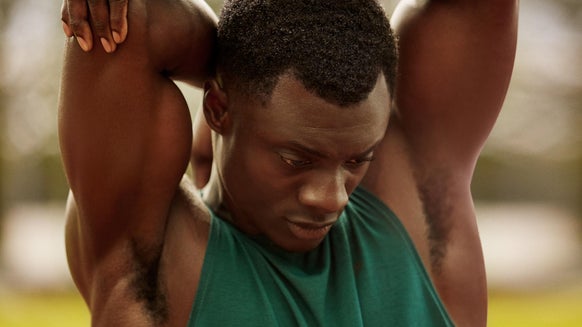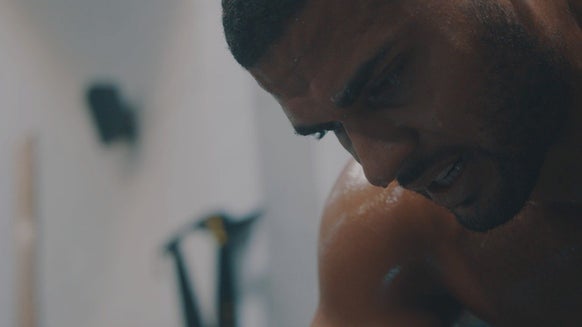
Rugby is a physically demanding sport - a mixture of running, passing, and hard-hitting body contact over 80 minutes. Players don’t have little protective equipment and need a mixture of strength, speed, and good cardiovascular stamina to play.
The level of impact on the body at a professional level while playing rugby has been likened to that of a car accident, but the sport packs a punch even in the amateur game.
With this level of impact and stress on the body after a match, however fun it may be - it’s important to ensure you are taking steps to protect yourself from injury and helping faster recovery post-game.
Staying physically strong and maintaining cardiovascular fitness is extremely important to ensure the body can deal with the game.
As well as this, making sure to work on mobility and stretching is important to help ensure muscles and joints are just as strong when it comes to playing and recovering.
Why Rugby Players Should Stretch
Stretching is an aspect of health and fitness that many overlook but it’s extremely important. Regular stretching ensures muscles are kept flexible, strong, and healthy.
The increased flexibility from stretching helps with mobility and range of movement in the body’s joints. Lacking flexibility can lead to muscles shortening and becoming tight, which in turn can lead to pulls or tears which can cause serious injuries.
It’s important for everyone to work on their stretching and mobility to help both training and everyday activities.
Rugby players are no exception to requiring flexibility - implementing a good stretching routine is essential. The game of rugby requires constant changes in speed and direction, as well as many technical movements such as tackles, lineouts, scrums, and rucks which require the body to be able to get low, fast reactions to get up, be quick off the mark, lift and jump. This means that the body needs to be able to adapt quickly and constantly over a game.
Rugby players who invest in their stretching and mobility can help reduce the risk of injury on muscles and joints and ensure they are fit enough to withstand anything the game throws their way.
Five stretches rugby players need
We’ve got five stretches that are easy to implement and can help you start to build a stronger body that will help both your training and overall gameplay when hitting the field.
Ensure you stretch both before and after playing, make sure to warm up slightly before starting any stretches, be slow and steady making sure to breathe through each movement.
You can use a mixture of static and dynamic stretches within a program but make sure to be well rounded and hit all muscle groups, and never force a muscle to over stretch.
Cross body shoulder stretch
Tight shoulders can lead to stiffness in your upper body, especially in the neck and back.
This can limit your ability to get into optimal positions when playing as well as lead to poor posture or limited mobility in everyday life.
The cross-body shoulder stretch is a quick and easy stretch to use to mobilize the shoulder. Follow the below steps:
- Stand with your feet hip-width apart, knees soft and shoulders pulled back and down.
- Raise your right arm straight in front of you, and then, keeping it straight, move it across your body, so it sits mid-chest, hand pointing to the left.
- Bending your left arm up, place your left hand above or below the elbow of the right but never on the joint. You can also choose to hook, allowing the right arm to sit in the bent elbow of the left.
- Use the left hand/arm to put a little bit of pressure on the right arm to deepen the stretch.
- Once in position hold for 20-30 seconds. Deepen the stretch and hold for a further 10-20 seconds. If you feel any pain stop, and only go until you feel a slight pull in the muscle; make sure to not force the muscle too far too quick.
Lying crossbody knee stretch
Loosening up your lower back, core, and obliques is important, and helps prepare your body for any twisting or change of direction movements.
A lying crossbody knee stretch is a dynamic stretch that can help mobilize the mid-lower body. Follow the below steps:
- Lie on the ground on your back, arms straight out to either side.
- Start by bending your knees into a 90-degree angle and lift your feet off the floor. Hold in this position.
- Once legs are raised with a bent knee, slowly rotate your hips and lower knees towards the floor on your left side. Keep your back flat on the floor and with your hips moving.
- Once in position hold for 20-30 seconds, and then slowly return to the starting position before rotating to the right.
- You can deepen the stretch by placing your hand on the top of your knee and applying a small amount of pressure.
Hamstring stretch
Your hamstrings are a group of muscles that are prone to getting tight and straining or tearing, especially in sports that require a lot of change of speed, sprinting, and stop-start movements such as in rugby.
The hamstring stretch is great for keeping them loose and helps reduce risk of injury. Follow the below steps:
- Stand with your feet hip-width apart, knees soft and shoulders pulled back and down.
- Move your right foot forward, so it’s slightly in front of your left and slightly bend your left knee.
- Drive your hips back a little keeping your right leg straight and left bent, you can rest your hands on the left thigh above the knee.
- Feel the pull through the back of your leg as you drive your hips back, hold for 20-30 seconds, and then slowly return to the standing position before switching to the other side.
Standing quad stretch
The front of your leg is your quad, another large muscle group which is vital for lower body movement, especially running, squatting, and quick changes of direction.
The quad stretch is great for keeping them loose and helps reduce risk of injury. Follow the below steps:
- Stand with your feet hip-width apart, knees soft and shoulders pulled back. You can stand close to a wall if you need help with stability.
- Lift your right foot behind you towards your bum, keeping your knees and thighs together, and holding your foot by the laces at your bum with your right hand.
- You should feel a gentle pull in the front of your leg, you can slightly drive your hips forward to help deepen this feeling.
- Hold for 20-30 seconds, and then slowly return to the standing position before switching to the other side.
Kneeling hip flexor stretch
Tightening of the hips can lead to poor running and moving technique and lead to other muscles in the legs then becoming tighter. Loosening up the hips can help improve speed, stability and reduce risk of injury.
The kneeling hip flexor stretch is great for keeping them loose and reducing risk of additional pressure on the lower back and knees. Follow the below steps:
- Kneel on your right knee letting the top of your foot lie flat on the floor and place your left foot flat on the floor just in front of you, bending at the knee.
- Keep your right knee at a 90-degree angle with your knee and hips in line.
- You can place your hands on your hips, roll your shoulders back and down, then slowly push your hips forward over the front knee (left).
- Push gently through your left hip. Hold for 20-30 seconds, and then slowly return to the standing position before switching to the other side.
- Repeat on each side a few times.
Take Home Message
Overall, no matter how you train or what sport you play or participate in, stretching and mobility is often overlooked by most people, which in turn leads to higher levels of injury.
Ensuring you stretch both before and after training or playing can help ensure your body is ready for the session and able to start recovering more effectively. Investing in your stretching will ensure you can train better, play harder, and in turn make sure that your body is ready for anything.
Incorporate both static and dynamic stretching into your routines and take your time to move through the movements to ensure you don’t over stretch a muscle before it loosens. A good routine will have a whole variety of movements which will target different muscle groups to ensure your body gets a well-rounded session in.
Want more training advice?
READ THESE NEXT:

Exercises To Boost Your Netball Skills
Learn the best training moves to improve your strength, speed, and agility so th...

Long Distance Running: Four Week Training Plan
Follow this four-week training plan to reap the physical and mental health benef...










